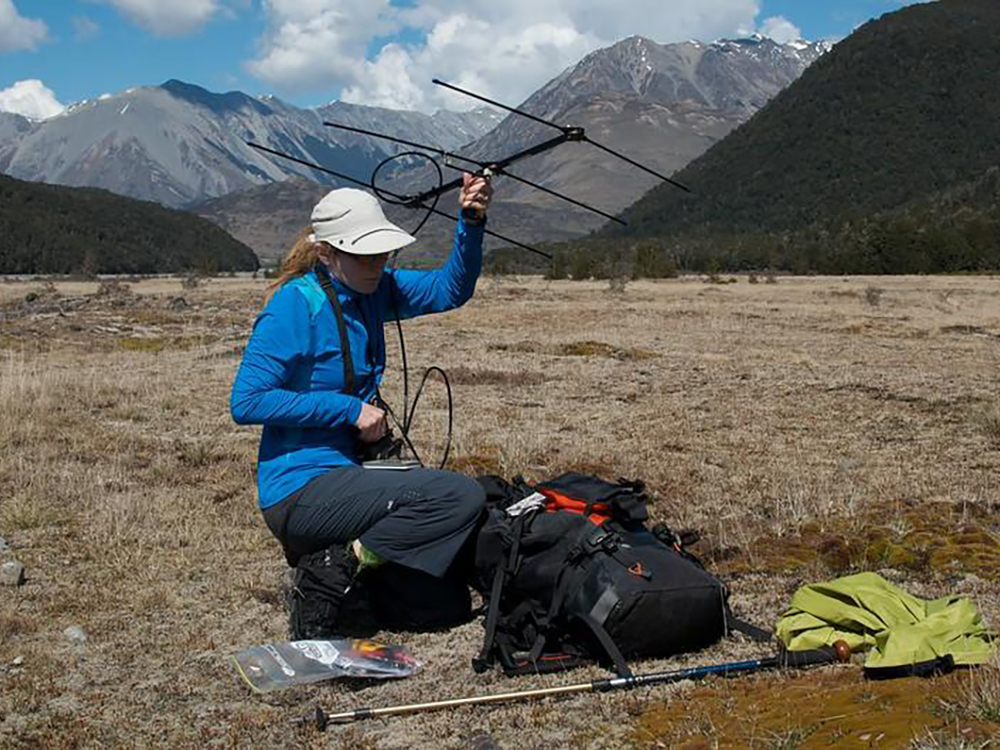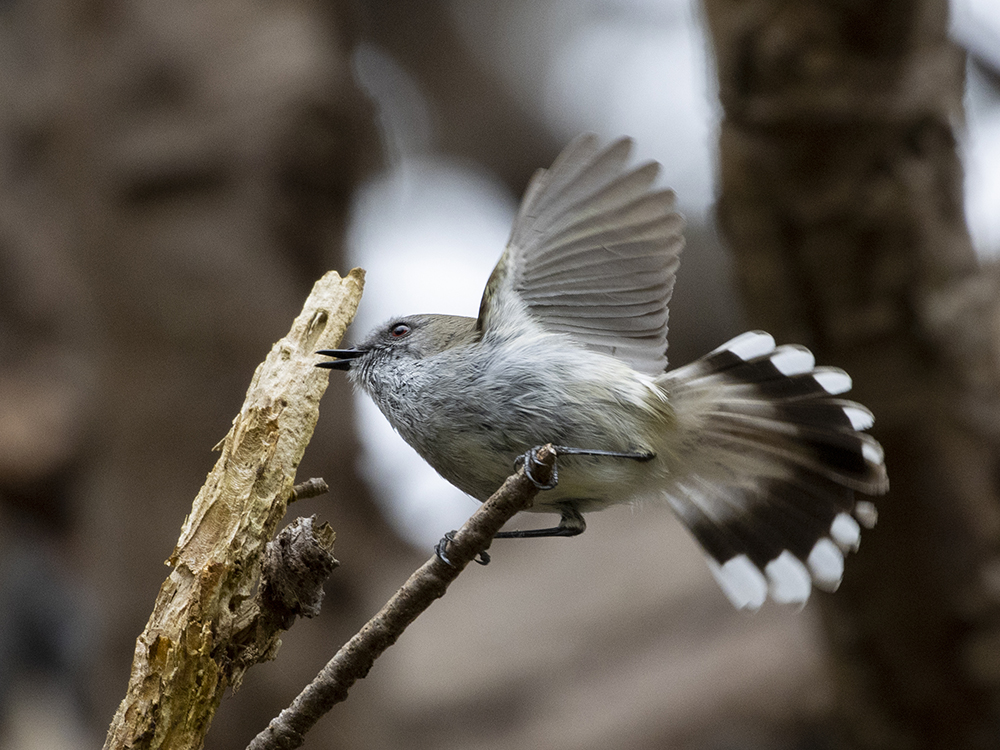Laura Molles - listening to birds
To mark the International Day of Women And Girls In Science on 11 February, Verum Group is profiling one of our brilliant women in science - Dr Laura Molles. Laura is a behavioural ecologist with a particular interest in animal communication.
Working with Dr Carol Bedoya at Verum Group, Laura has successfully developed machine learning approaches for individually identifying roroa – great spotted kiwi by their calls.

February 2023: To mark the International Day of Women And Girls In Science on 11 February, Verum Group is profiling one of our brilliant women in science - Dr Laura Molles. Laura is a behavioural ecologist with a particular interest in animal communication. She has worked on several field-based projects around the US and in Costa Rica before moving to New Zealand in 2000.
Here in New Zealand she has studied kōkako, kakapo, little blue penguins, bellbirds, tui, and great spotted kiwi, including working on reintroductions and other projects that integrate behaviour and conservation biology.
“I’m originally from Southern California, where I grew up in a neighbourhood bordered by three freeways and a river with concrete banks. But nature is everywhere! There are always interesting critters to watch, even in the middle of a city. I’ve also had the good fortune to study animals in deserts, forests, and grasslands in the US, tropical dry forests in Costa Rica, and in several amazing places around New Zealand since I moved here more than 20 years ago. Before joining Verum Group and the Atarau Sanctuary team I was a postdoctoral researcher at University of Waikato, a Senior Lecturer at Lincoln University, and a Natural Environment Advisor at the Christchurch City Council.

Laura and Carol have successfully applied their methods to the songs of riroriro – grey warblers (Gerygone igata) collected with directional microphones in the Christchurch and Banks Peninsula areas. Photo: Louise Thomas.
“My main research areas are animal behaviour and conservation, with a particular focus on acoustic communication. I address research aims by asking birds questions, on their own territories in the wild, in a way that is meaningful to them and minimally disruptive to their daily (or nightly) lives. I have studied vocal behaviour in a wide range of bird species, from tropical songbirds to penguins, with the aim of understanding how they use their songs to communicate with friends, mates, and rivals. In more conservation-oriented projects, students and I have worked alongside translocations and reintroductions of North Island kōkako, tūī, and roroa, and looked at habitat use and foraging behaviour of kākāpō, kororo – little blue penguin, and korimako.”
Laura is based at the Atarau Sanctuary near Greymouth - a sanctuary supported by Verum Group, which offers research opportunities for our scientists, especially in great spotted kiwi/roroa (Apteryx haastii).
“When you hear birds calling, you’re listening to a conversation. Being able to identify individual birds from their song should also allow us to monitor individuals, neighbourhoods, and populations with minimal disturbance.”
Working with Dr Carol Bedoya at Verum Group, Laura has successfully developed machine learning approaches for individually identifying roroa – great spotted kiwi by their calls. The researchers have collected and analysed hundreds of roroa calls from thousands of hours of recordings, and have confirmed that individual adult roroa can be distinguished acoustically. They have also successfully applied their methods to the songs of riroriro – grey warblers (Gerygone igata) collected with directional microphones in the Christchurch and Banks Peninsula areas.
The pair are currently expanding their scope to additional populations and species, and aim to use acoustic identification as a novel way to study animal behaviour in the wild while contributing to monitoring and management goals.
Verum Group’s work on identifying grey warbler/riroriro from song was supported by the Brian Mason Scientific and Technical Trust.
Read Laura's Latest Research
Jahn, P., Ross, J.G., Mander, V. & Molles, L.E. (2022). Post-translocation movements and ranging behaviour of roroa (great spotted kiwi, Apteryx maxima). Notornis 69, 3, 135-146.
What it's about:
Translocations are increasingly used in kiwi (Apteryx spp.) conservation management, and their outcome is largely influenced by post-release dispersal and survival. A translocation of roroa (great spotted kiwi, A. maxima) to the Nina Valley, near Lake Summer Forest Park, is the first reintroduction of the Arthur’s Pass roroa population.
Jahn, P., Ross, J., MacKenzie, D. & Molles, L. (2022). Acoustic monitoring and occupancy analysis: cost-effective tools in reintroduction programmes for roroa-great spotted kiwi. New Zealand Journal of Ecology 46, 1, 3466. doi:10.20417/nzjecol.46.21
What it's about:
Monitoring the response of wildlife populations to conservation management, such as translocations, is crucially important for assessing its effectiveness. Passive acoustic monitoring (PAM) is an emerging tool for monitoring cryptic and elusive species and is increasingly used in the management of kiwi.
Bedoya, C. & Molles, L. (2021). Acoustic censusing and individual identification of birds in the wild. 14pgs. Preprint doi:10.1101/2021.10.29.466450
What it's about:
Individual bird calls carry information that can be utilized as an alternative to physical tagging of individuals. However, it is rarely used in conservation tasks despite rapidly-expanding use of passive acoustic monitoring techniques. Reliable acoustic individual recognizers and accurate quantifiers of population size remain elusive, which discourages the use of vocal individuality for monitoring, wildlife management, and ecological research. We propose a neuro-fuzzy framework that allows discrimination of individuals by their calls, the discovery of unexpected individuals in a set of recordings, and estimation of population size using solely sound.
Click here for Supplementary Information (Data) used in this paper.